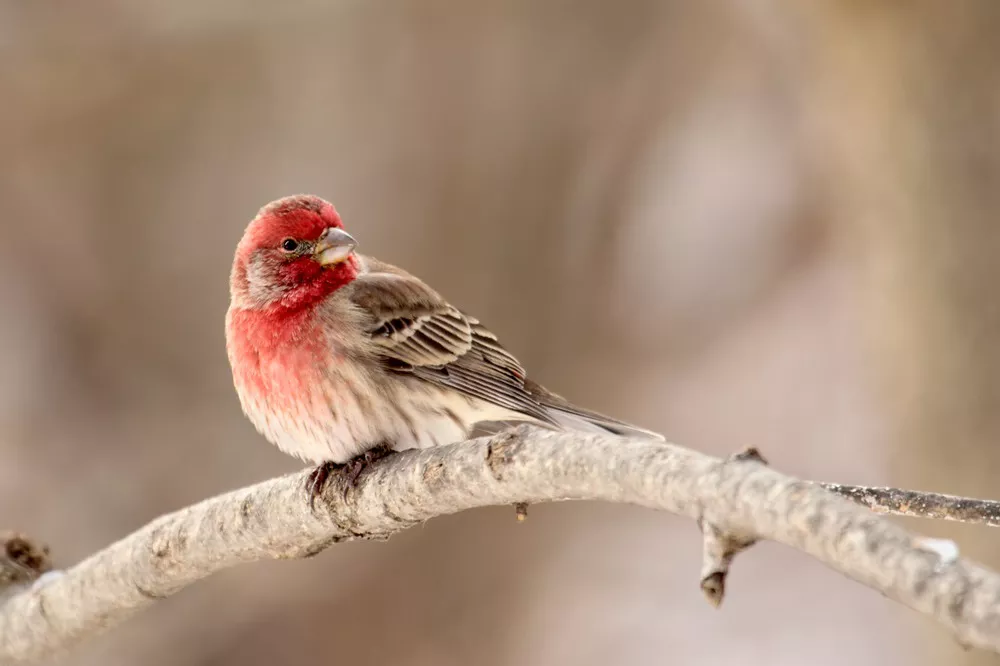The house finch (Haemorhous mexicanus) is a small passerine bird native to western North America. However, since its introduction to the eastern United States in the 1940s, the species has expanded its range dramatically and is now commonly found throughout the country. This expansion has raised concerns among researchers and conservationists, who question whether house finches should be considered an invasive species. In this article, we will delve into the characteristics and behaviors of house finches, explore the impact they have on native ecosystems, and provide a comprehensive assessment of their invasive nature.
Characteristics of House Finches
House finches are small, colorful birds, with adult males displaying vibrant red plumage on their heads, chests, and shoulders. Females and juveniles have more muted brown or gray feathers. They are highly adaptable and can thrive in a wide range of habitats, including urban and suburban areas, as well as natural environments such as grasslands and woodlands. House finches primarily feed on seeds, fruits, and insects, and they have a versatile diet that allows them to exploit various food sources.
Defining Invasive Species
Before delving into the question at hand, it is essential to understand what an invasive species is. According to the National Wildlife Federation, an invasive species is “a non-native species whose introduction causes or is likely to cause economic, environmental, or human harm.” In simpler terms, an invasive species is a plant or animal that is not native to a particular area and whose presence disrupts the ecosystem balance, often resulting in severe damage to the environment, economy, or human health.
Assessing the Status of House Finches
Based on the definition of invasive species, we can critically analyze the status of the House Finch. While it is true that the House Finch is not native to some parts of North America, it is worth noting that its introduction to these areas was not intentional. The species was first introduced to Long Island, New York, in 1940 when pet traders illegally released captive birds. In subsequent years, House Finches were also introduced to Hawaii, Puerto Rico, and the Dominican Republic, among other places, due to their popularity as cage birds.
Unlike most invasive species that cause significant ecological disruption, the impact of House Finches on their new habitats has been relatively minimal. In fact, the House Finch has become integrated into the ecosystem of the regions where it has been introduced and coexists with other native bird species without posing any significant threat to their survival.
In terms of economic harm, House Finches have not caused any notable impact. While these birds may consume crops in small amounts, they also play an essential role in pollination, pest control, and seed dispersal, making them beneficial to agriculture.
Therefore, based on the definition of invasive species, it is difficult to classify House Finches as invasive, considering their minimal impact on the environment, economy, and human health.
Potential Impacts of House Finches
While current evidence suggests that House Finches are not invasive, it is important to note that their status can change in the future depending on various factors. For instance, if their population increases significantly and surpasses that of native bird species, they could become a threat to biodiversity. Additionally, like other birds, House Finches have the potential to spread diseases to humans and other animals, which could result in serious health consequences.
Conclusion
In conclusion, while the House Finch is not a native bird species to some parts of North America, it is debatable whether they should be classified as invasive. Their presence in these areas was not intentional, and their ecological, economic, and health impacts have been minimal. However, it is crucial to monitor their population growth and behavior to ensure that they do not pose a significant risk to the environment or human health in the future.
Related topics:
- Where Do House Finches Nest?
- House Finch vs Purple Finch: How to Identify the Differences
- How Long Do House Finches Live?


 Facebook
Facebook  Instagram
Instagram  Youtube
Youtube 